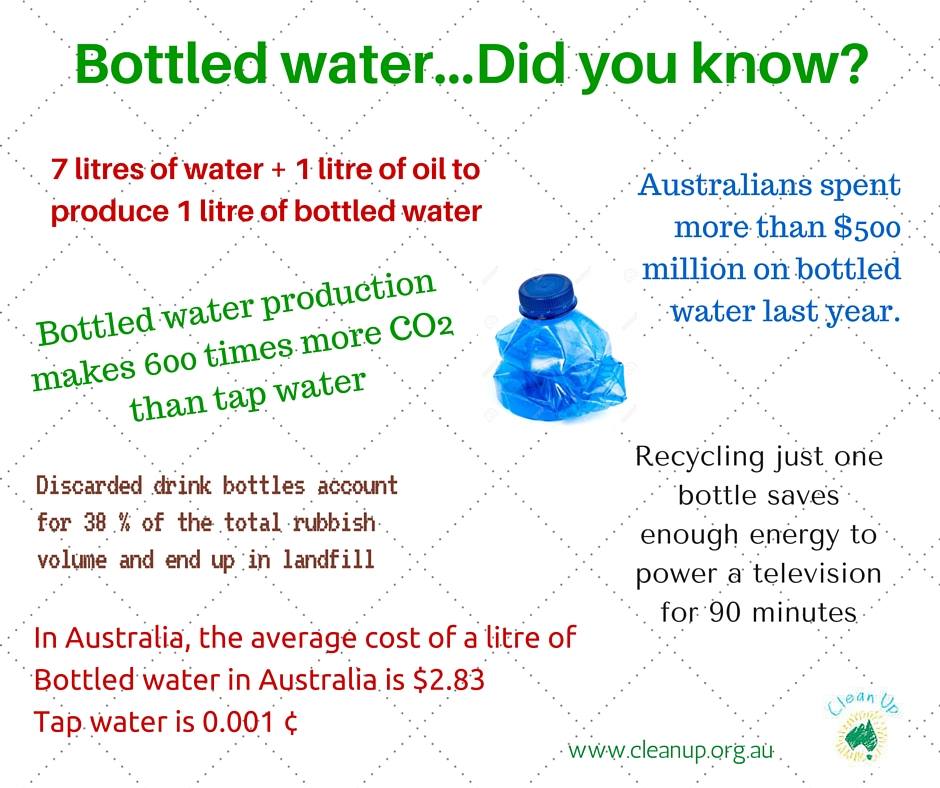#WaronWaste Craig Puts Bottled Water to the Test
Australian Tap Water is among the best so why do Aussies still drink it

Tapped (Documentary)
The high cost — to both the environment and our health — of bottled water is the subject of this documentary that enlists activists, environmentalists, community leaders and others to expose the dark side of the bottled water industry. Americans may rethink their obsession with bottled H20 when they learn of the unregulated industry’s willingness to ignore environmental and health concerns, and the problems that arise as a result.
The Story of Bottled Water … from Justina Adlyte
The Life Cycle Of A Plastic Water Bottle – A Stop Motion Film
This was a project for our Global Studies class at school. We have been focusing a lot on global citizenship, and the health of our planet, economy, and society. Through a media of our choice we had to bring awareness to/inspire change in our community. Our group (myself and two other students from the class) decided to make a stop motion video about bottled water. We chose bottled water because it is a problem that is often overlooked in our society. We wanted to bring light on a situation which most people are unaware of. It is an extremely luxurious item that is bringing harm to our planet, but it is something that would be so easy to stop.
sources:
http://www.thedailygreen.com/environm… http://www.onlineeducation.net/bottle…
http://news.nationalgeographic.com/ne…
http://www.nrdc.org/water/drinking/bw…
No copyright intended. All rights for the music belong to the cinematic orchestra.

Tap vs. Bottled–What Should You Drink?
Glug, glug, glug–that’s the sound a ginormous number of us make as we sip bottled water in our cars, at the gym, behind our desks.
The sound you DON’T hear is the thwack of 60 million bottles a day being tossed into U.S. landfills, where they can take up to 1,000 years to biodegrade.
If that’s not enough to turn your conscience a brighter shade of green, add this: Producing those bottles burns through 1.5 million barrels of crude oil annually–enough fuel to keep 100,000 cars running for a year. Recycling helps but reusing is even better. Invest in a couple of portable, dishwasher-safe, stainless steel bottles like Klean Kanteens that won’t leach nasty chemicals into your water. (Don’t get into the habit of refilling the water bottle you just emptied; the polyethylene terephthalate it’s made of breaks down with multiple usings.)
4 REASONS TO TURN ON THE TAP
1. Tap water is tested daily
Under the Safe Drinking Water Act, water suppliers are required to provide an annual report on the quality of your local water and to test tap water daily. By comparison, the FDA examines bottled water only weekly, and consumers can’t get the agency’s results. You can easily get the lowdown on your state’s drinking water quality at http://www.epa.gov/safewater/dwinfo/index.html
2. Tap water is a bargain
Bottled water costs about 500 times more than tap. If you’re into really fancy labels, up to 1,000 times more.
3. Tap water is a tooth saver
It has more fluoride than bottled water, which helps prevent tooth decay. (Yes, you never outgrow your need for fluoride.)
4. Tap water is often tasty
Some places (New York City for one) have delicious water, but if you don’t love the flavor of yours, the solution is simple: Run your tap water through a Brita or Pur filter to remove most tastes and odors. The average home filter goes for $8.99 and produces the equivalent of 300 large (16.9 ounce) bottles of water. That’s about $0.03 cents a bottle, versus the $1.25 or so you’d pay in a market.
One last thing: Don’t just think about making this switch; actually do it. Today. It does the world and you good. Plus, allowing nagging, unfinished tasks (known as NUTs) to go undone can make your RealAge 8 years older!





